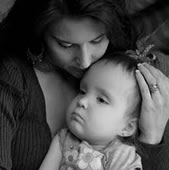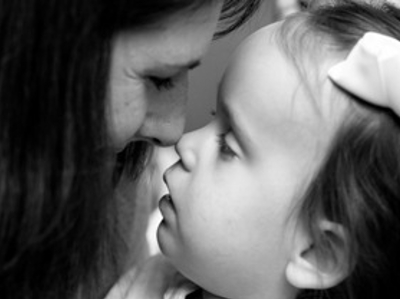Managing Symptoms
Tay-Sachs, Sandhoff, GM1 and Canavan Diseases
Managing symptoms to promote comfort and quality of life is currently the only available treatment for infantile and juvenile Tay-Sachs, Sandhoff and GM1 and Canavan. This section discusses common symptoms and techniques available to manage. It is not a substitute for professional medical advice. Please consult your physician or care provider for additional information.
Not every child will experience all the symptoms discussed. These are options available to you to help manage the symptoms and promote comfort. Some may not fit into your family's Philosophy of Care.
Find and build relationships with doctors and care providers before symptoms present. It is more important to find a care provider who values and trusts your parental instincts than one who has Tay-Sachs or related experience. Expert clinicians on the NTSAD Scientific Advisory Committee are available to consult with treating physicians anytime.
Developing the right symptom management plan is challenging. Read Philosophy of Care to learn more about how to make these difficult care choices. Remember, NTSAD supports you in all your care choices and there are no right or wrong choices - only the ones that are right for you.
Feeding and Nutrition
Swallowing begins to deteriorate in the second year of life for children with the infantile forms of Tay-Sachs, and later in life for those with the juvenile form. A speech language pathologist can provide techniques to promote the suck swallow reflex and can demonstrate proper positioning to reduce the risk of aspiration pneumonia and reflux.
A swallow test can help determine when it is time to consider a feeding tube. The decision to use or not use a feeding tube is probably the biggest care choice you will face. Read Philosophy of Care to learn more about how to make these difficult care choices. Remember, NTSAD supports you in all your care choices and there are no right or wrong choices - only the ones that are right for you.
See pages 18-24 of the Home Care Manual for more detailed information on feeding. And for a video on g-tubes visit the Care Tip Series here.
Seizures
All children experience seizures, although the timing and type can vary. Some respond very well to seizure medications while others are less successfully managed. It can be challenging to manage seizures in a way that balances seizure control and avoids unwanted medication side effects such as drowsiness or increased secretions. Some medications such as Artane have the desired side effect of reducing secretions.
A trusted neurologist is a valuable resource for managing seizures. Find and build a relationship with a neurologist before seizures present. It is more important to find a neurologist who values and trusts your parental instincts than one that has Tay-Sachs or related experience. Expert clinicians on the NTSA D Scientific Advisory Committee are available to consult with treating physicians anytime.
Developing the right seizure management plan is challenging. Read Philosophy of Care to learn more about how to make these difficult care choices. Remember, NTSAD supports you in all your care choices and there are no right or wrong choices -“ only the ones that are right for you.
See pages 27-29 of the Home Care Manual for more detailed information on seizures, and/or watch a conversation with a neurologist about seizures here.
Respiratory Health
Promoting respiratory health is a major aspect of symptom management. Affected children are prone to lung infections due to increased saliva (mucous) and reduced swallowing. There are many options available to promote respiratory health including medication*, equipment and positioning. Develop a respiratory health management plan with your pediatrician; see a pulmonologist for more advanced respiratory health needs and management.
See pages 16-18 of the Home Care Manual for more detailed information on respiratory health. To watch a video explanation of a respiratory therapy vest, visit Care Tip Series here.
Play & Sensory Stimulation
Play and activities that provide sensory stimulation are great ways to interact with your child even if s/he has some sensory impairment. Get creative and explore what activities and stimulus your child enjoys.
Bright shiny mobiles provide visual stimulus. Listen to a variety of music to discover your child's favorite. One family was delighted and surprised to discover their child enjoyed marching band music!
Sense of smell is an excellent way for your child to interact with the world. Use lavender lotion to give your child a relaxing massage. Let your child smell kitchen spices, seasonal flowers and your favorite perfume. Note if particular scents seem to trigger seizures and avoid having these around.
Let your child feel and explore or gently rub different materials against your child's cheek to promote tactile stimulation.
See pages 31-35 of the Home Care Manual for more detailed information on play and sensory stimulation.
Complementary Medicine
Complementary medicine generally refers to using a non-mainstream approach together with conventional doctor care. And the boundaries between complementary and conventional medicine overlap and change with time. The NTSAD Annual Family Conference provides valuable discussion on the topic.
Read more on Complementary Medicine. For videos on physical therapy, motion and massage, visit the Care Tips Series here.



